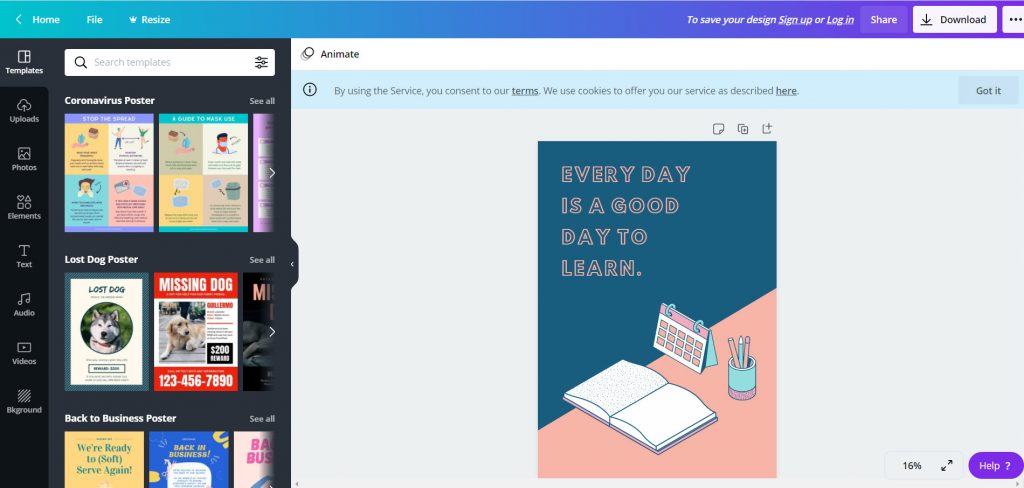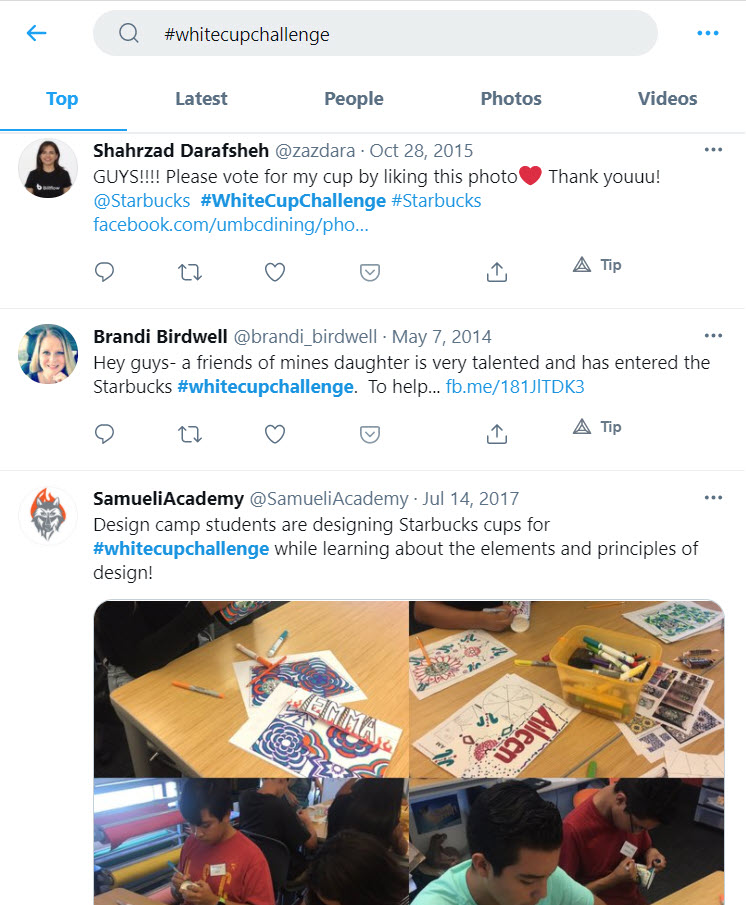5 Ways to Target Millennials Through Content Marketing
A lot has been said about millennials. However, we’re all living in their world now, and it’s in your best interest as a brand to promote to them,
Quick Links
In this post, you will learn the ways of getting in the good graces of millennials through your content marketing strategy. This way, you can generate buzz and potential sales from the biggest segment of our population today.
Lead with Value First
Repeat after me:
The best way to sell to millennials is to not sell to them.
This may sound like an odd approach to selling towards any demographic in general. But it’s the best e-commerce content marketing tactic you have right now with this bunch.
It all boils down to the lack of trust millennials have in traditional marketing and advertising. They’re sick and tired of being bombarded with ads and commercials of products they have no interest in the first place.
And in the market today, they want brands they can TRUST.
Companies must learn how to create informative and trustworthy content on different platforms. This enables them to instill confidence in their audience because they provided value first before everything else.
Canva, for instance, was valued at A$60 billion and has over 30 million active monthly users NOT because they force-fed their product onto millennials and its audience.
It’s because it has arguably the best freemium and easy-to-use graphic design tool on the market.

By focusing on giving value instead of selling, Canva was able to grow its business the way it did within 9 years.
Optimize Content for Keyword Intent
Millennials are busy folks. You need to grab their attention immediately before they bounce away faster than you could say “avocado toast.”
To be fair, you can’t really blame them – there’s too much happening around that it’s hard to keep track and stay focused.
This is why you can’t just create SEO-friendly content and expect to convert visitors into customers.
And let’s face it: blog traffic is a vanity metric in and of itself. Generating thousands of traffic to your blog every day isn’t impressive unless you’re converting them into leads or customers.
To create content that converts, you need to develop a strategy that marries content marketing and SEO by publishing well-written content optimized to its user intent.
There are three types of keyword intent:
- Navigational, ex. “Nike”
- Informational, ex. “How to clean suede shoes”
- Commercial/Transactional, ex. “Buy basketball shoes”
Using these types, you need to create content that satisfies keyword intent. You don’t want to sell suede shoes in the content if users simply want to know how to clean them.
Market on Different Channels
Millennials are web-savvy – they know their way around different online channels and platforms. So if you’re marketing to them exclusively on social media, for example, you’re not maximizing your opportunities for conversions.
However, omnichannel marketing isn’t that simple, either. You don’t want to cast too wide of a net that you’re spreading yourself too thin. You need to strategize and plan your steps before you proceed with your campaign.
Arguably the most important part of this approach is to determine which platforms you need to promote your business.
This would depend on your buyer persona as well. What their demographics, behavioral traits, pain points, and hobbies determine the platforms they frequently use.
You can even break them down into segments to get more granular with your approach and find out where each type is in your sales funnels. This paves way for you to create content across your chosen platform that would appeal to each one.
Finally, the type of online business you have plays a role in this stage. For e-commerce brands, you can’t do without email marketing and SMS since those are the easiest and most effective ways to reach out to your customers. If you’re creating blog posts on your online store, you need blogging functionalities in your platform to make this work.
For blogs and publishing companies, SEO and social media are probably your best bets. It’s also possible to do email marketing here as well, provided that you know how to collect their emails without being intrusive.
From there, you should have a better understanding of millennials as your audience and how you should approach them by leveraging multiple online touchpoints.
And to make things more convenient for you, use a platform to manage your content marketing efforts and house the different online channels in a single place.
Enlist Help from Influencers
Millennials love their influencers – the age of social media has paved the way for influencer marketing to take shape. It’s a legitimate avenue that is proven to help raise your content marketing strategy.
The idea here is to get influencers to promote your brand by posting something about your product or service on their social accounts. The success of this undertaking depends on the level of engagement the post will get in relation to your goal, whether for brand visibility, revenue generation, and others.
Depending on your industry and budget, the type of influencer you’ll choose to help market your brand is key to driving results to your campaign.
Ideally, micro-influencers are your best bet when it comes to promoting towards millennials. Unlike mega and macro-influencers on the level of reality TV stars and social media sensations, micro-influencers don’t have as large of an online following. However, they more than compensate for it with their audience engagement and topic expertise.
In some ways, both factors bear more importance since your goal as a brand is to ramp up interest towards your brand, if not actual sales. At the very least, you associate yourself with a TRUSTED person in your niche that could rub off on your brand, if not drum up more interest towards your business.
Take Advantage of User-Generated Content
Millennials like to get in on the action. Thanks to the power of social media, they have a platform to voice out their thoughts and share their talents.
As a brand, you want to leverage the unbridled power of the masses. It’s just a matter of organizing a campaign that incentivizes people to share something about your brand.
One of the more popular UGC campaigns came from Starbucks when they encouraged customers to come up with a handmade design for their cups. The #WhiteCupChallenge launched in 2014 amassed over 4,000 entries in a week.

The winner not only received a $300 gift card from the brand, but the created design will be immortalized in a Starbucks tumbler.
For UGC to work the way that Starbucks did it, you need to lay down the terms of your proposed partnership. This will help you communicate your goals and what you want to achieve with the content submitted by users.
From here, it’ll be much easier to parse through the content and improve your marketing team’s workflow.
Conclusion
As you can see, there’s a common theme that ties together all these ways of marketing towards millennials with content:
TRUST.
Millennials will only take time to look at your brand and what it offers if you can gain their trust.
Therefore, by following the advice above, you should:
- Deliver value first to prove to millennials that your brand is worth their time.
- Create content with user intent in mind to increase conversions.
- Market across multiple online channels based on buyer persona and business type.
- Associate your brand with authoritative micro-influencers in your space.
- Get people to talk about your brand and engage with it!
Once you gain their trust by coming up with campaigns from the different ways above, you will have them eating from the palm of your hand!
How to Use AI-Powered SEO Tools for WordPress eCommerce
SEO is a critical factor in the success of any e-commerce WordPress store. As competition…
0 Comments11 Minutes
Why Short-Form Videos Are the Future of Content Marketing
Your Instagram customers spend over 50% of their time watching short-form videos and reels. Rather…
0 Comments12 Minutes
The Role of Digital Marketing in Business Growth
Online marketing touches every aspect of a business, whether it is initiating the idea or for an…
0 Comments3 Minutes
AI Meets Authenticity: Balancing Automation and Human Touch in Content Marketing
Is your brand starting to sound like a robot? In a world where algorithms write faster than any…
0 Comments8 Minutes
Essential Tools for Enhancing Web Design and UX Hosting
Have you ever visited a website that felt slow, clunky, or confusing? A website that is poorly…
0 Comments11 Minutes
How a Mini Cart Transformed My Store’s Shopping Experience
Okay, real talk—running an online store is hard. You think you’ve got everything figured out, you…
0 Comments9 Minutes
Balancing Your Security Initiatives With Industry Compliance Requirements
Managing a business today comes with a number of daily battles that need to be fought. Resources…
0 Comments11 Minutes
Best plugins to enhance the customer shopping experience
Customer experience is a key part of every online store. A good experience helps customers find…
0 Comments7 Minutes








